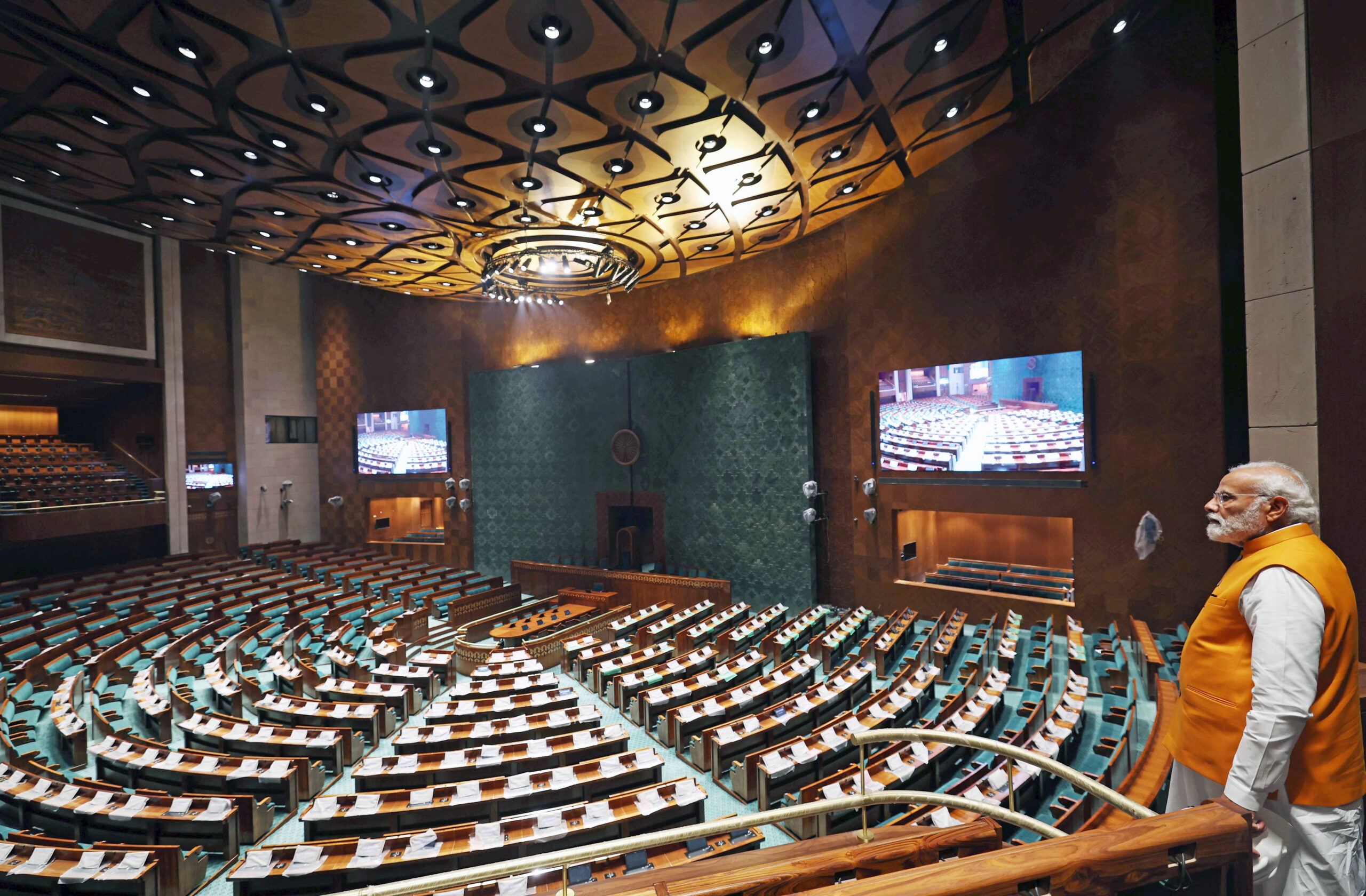A Fountainhead Of The People’s Hopes And Aspirations
Context:
India will experience a momentous occasion on May 28 when the new Parliament House is inaugurated, marking the country’s 75th anniversary of independence. We finally have a new edifice in independent India after using a Parliament building that is about a century old and symbolised a colonial age.
Old Parliament Building
- Location: The Sansad Bhavan is located in New Delhi, the nation’s capital.
- Sir Edwin Lutyens and Herbert Baker, two British architects, were responsible for the structure’s design.
- Building: Work on the Sansad Bhavan’s building began in 1921 and was finished in 1927.
- Architectural Design: The building combines aspects of classical and modern designs, blending British and Indian architectural influences. Sansad Bhavan has a resonant circular shape, with collonaded corridors spreading outwards from a central dome. The Ashoka Chakra, a well-known emblem in Indian culture, served as inspiration for the building’s central dome, one of its most distinctive characteristics.
- Columns and pillars: To provide a touch of traditional beauty, the structure contains columns and pillars that are reminiscent of old Indian architecture.
- Function: The Lok Sabha (House of the People) and the Rajya Sabha (Council of States) are both housed in the Sansad Bhavan, which serves as the location of the Indian Parliament. The lower chamber of the Indian Parliament, or Lok Sabha, represents the country’s citizens. It is the venue where MPs are chosen to debate and pass laws. As the upper chamber of the Indian Parliament, the Rajya Sabha represents all of India’s states and union territories. It is essential in examining and recommending modifications to draught laws.
- The Sansad Bhavan, which stands for inclusion, representation, and decision-making, is a well-known emblem of Indian democracy and government.
- Political Significance: The structure serves as a focal point for political activity, serving as a venue for meetings, debates, and other events aimed at resolving national problems.
- Historical Importance: The Sansad Bhavan has played host to several pivotal events in Indian political history throughout the years, including the drafting of the Indian Constitution and the adoption of important laws.
- The Ancient Monuments and Archaeological Sites and Remains Act of 1958 protects the Parliament House complex since it is a heritage building.
New Parliament Building

- New Parliament House Opening: On May 28, which also happens to be the country’s 75th anniversary of independence, India will experience a momentous occasion with the opening of a new Parliament House. The brand-new structure embodies the hopes and ideals of a transforming India since 1947.
- Challenges of the Old Parliament House: After its 1927 opening, the current Parliament House encountered several difficulties. Due to a lack of space, it required the construction of more stories and annexes over time. The structure had to undergo numerous retrofits, leaving little room for additional advancements. Due to numerous wirings for computers, air conditioners, and security devices, it had a ragged aspect. There were also health and safety concerns, as evidenced by occurrences like the stink coming from the AC ducts.
- Need for a New Parliament Building: Previous Presiding Officers had acknowledged the requirement for a new parliament building. In 2012, Speaker Meira Kumar called the Parliament building “weeping” and started looking for a new building. Sumitra Mahajan, the Speaker, asked for a new Parliament building with contemporary amenities in 2015. Prime Minister Narendra Modi took up the urgent need to create a new structure, and the first stone would be set in December 2020.
- Features of New Building: The new Parliament building has greater space, is more energy-efficient, and is more easily accessible. To suit the needs of the present and the future, it uses the most recent technologies. It provides increased audio-visual communication, simultaneous interpretation, and e-library access, increasing the ability and effectiveness of lawmakers and parliamentary secretariats. The structure also features a Constitution Hall that exhibits India’s democratic past as well as publicly accessible museum-calibre galleries.
- Comparative Analysis: India is not the only nation that has built a new Parliament building. To accommodate limited space and evolving demands, several nations, including Australia, the United States, Israel, and Canada, have built new parliamentary structures.
- Adapting to Changing Times: Modern legislative needs to change to meet the demands of the times. The essay emphasises how the development of machine learning and artificial intelligence is just one example of the profound changes taking place in the world. The brand-new Parliament structure serves as a reminder for India to get ready and armed for these brand-new difficulties. In the ambitious quest to create a better India, it is viewed as a symbol of optimism and desire, particularly for the younger generations.




